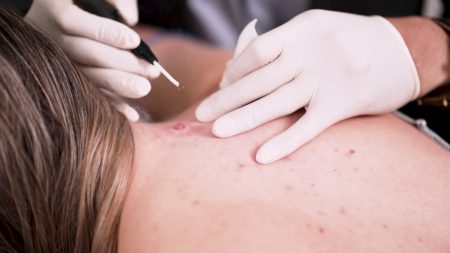Geographic Location
One of the primary factors influencing threadlift cost is the geographic location of the clinic or medical practice. Urban areas, particularly those with a high cost of living, tend to have higher prices for cosmetic procedures compared to rural areas. For example, a threadlift in New York City or Los Angeles is likely to be more expensive than the same procedure in a smaller city or town. This price difference is often due to higher operational costs, such as rent and salaries, in metropolitan areas.
Practitioner’s Experience and Reputation
The experience and reputation of the practitioner performing the threadlift also play a crucial role in determining the cost. Highly skilled and reputable doctors who have extensive experience in performing threadlifts may charge more for their services. Patients often seek out practitioners with a proven track record of successful outcomes, which can justify higher fees due to the perceived assurance of quality and safety.
Type and Quality of Threads Used
There are different types of threads used in threadlift procedures, including polydioxanone (PDO) threads, polylactic acid (PLA) threads, and polycaprolactone (PCL) threads. The type and quality of threads selected for the procedure can significantly affect the overall cost. High-quality threads that provide better results and have longer-lasting effects are typically more expensive. Additionally, the number of threads required to achieve the desired results will also influence the cost, with more threads generally leading to higher expenses.
Extent of the Procedure
The extent of the procedure, including the areas to be treated and the complexity of the case, can impact the threadlift cost. A full-face threadlift will naturally cost more than a procedure that targets only a specific area, such as the cheeks or jawline. Furthermore, more complex cases that require additional time and expertise will also be priced higher to reflect the increased effort involved.
Clinic’s Overhead and Technology
The overhead costs of the clinic or medical facility where the threadlift is performed can also affect the price. Clinics equipped with state-of-the-art technology and offering a luxurious environment may charge more for their services. These facilities often provide additional benefits, such as personalized care and advanced post-procedure support, which can contribute to the overall cost.
Additional Treatments and Aftercare
Sometimes, threadlifts are combined with other cosmetic treatments, such as dermal fillers or Botox, to enhance results. These additional treatments can increase the total cost of the procedure. Moreover, the cost of aftercare, including follow-up appointments and any necessary medications or skincare products, should also be considered when calculating the overall expense of a threadlift.
Marketing and Branding
Marketing and branding efforts of the clinic or practitioner can influence threadlift costs as well. Well-known brands and heavily advertised practices may charge a premium for their services. The investment in marketing is often passed on to the patients, contributing to higher prices.
Conclusion
The cost of a threadlift is influenced by a variety of factors, including geographic location, practitioner experience, type and quality of threads, extent of the procedure, clinic overhead, additional treatments, and marketing efforts. Prospective patients should consider all these elements when evaluating the potential expenses and choose a provider who offers a balance of quality and affordability. By understanding these factors, individuals can better prepare for the financial investment required for a threadlift and make more informed decisions about their cosmetic care.





